Model Context Protocol (MCP) finally gives AI models a way to access the business data needed to make them really useful at work. CData MCP Servers have the depth and performance to make sure AI has access to all of the answers.
Try them now for free →How to Access Live Salesforce Data Cloud Data in Power Automate Desktop via ODBC
The CData ODBC Driver for Salesforce Data Cloud enables you to integrate Salesforce Data Cloud data into workflows built using Microsoft Power Automate Desktop.
The CData ODBC Driver for Salesforce Data Cloud enables you to access live Salesforce Data Cloud data in workflow automation tools like Power Automate. This article shows how to integrate Salesforce Data Cloud data into a simple workflow, moving Salesforce Data Cloud data into a CSV file.
Through optimized data processing, CData ODBC Drivers offer unmatched performance for interacting with live Salesforce Data Cloud data in Microsoft Power Automate. When you issue complex SQL queries from Power Automate to Salesforce Data Cloud, the driver pushes supported SQL operations, like filters and aggregations, directly to Salesforce Data Cloud and utilizes the embedded SQL engine to process unsupported operations client-side (e.g. SQL functions and JOIN operations).
Connect to Salesforce Data Cloud as an ODBC Data Source
If you have not already, first specify connection properties in an ODBC DSN (data source name). This is the last step of the driver installation. You can use the Microsoft ODBC Data Source Administrator to create and configure ODBC DSNs.
Salesforce Data Cloud supports authentication via the OAuth standard.
OAuth
Set AuthScheme to OAuth.
Desktop Applications
CData provides an embedded OAuth application that simplifies authentication at the desktop.
You can also authenticate from the desktop via a custom OAuth application, which you configure and register at the Salesforce Data Cloud console. For further information, see Creating a Custom OAuth App in the Help documentation.
Before you connect, set these properties:
- InitiateOAuth: GETANDREFRESH. You can use InitiateOAuth to avoid repeating the OAuth exchange and manually setting the OAuthAccessToken.
- OAuthClientId (custom applications only): The Client ID assigned when you registered your custom OAuth application.
- OAuthClientSecret (custom applications only): The Client Secret assigned when you registered your custom OAuth application.
When you connect, the driver opens Salesforce Data Cloud's OAuth endpoint in your default browser. Log in and grant permissions to the application.
The driver then completes the OAuth process as follows:
- Extracts the access token from the callback URL.
- Obtains a new access token when the old one expires.
- Saves OAuth values in OAuthSettingsLocation so that they persist across connections.
- Connection string: DSN=CData Salesforce Data Cloud Source
- Get connection by: SQL connection variable
- SQL connection: %SQLConnection% (the variable from the "Open SQL connection" action above)
- SQL statement: SELECT * FROM Account
- Variable to write to: %QueryResult% (the variable from the "Execute SQL statement" action above)
- File path: set to a file on disk
- Configure Advanced settings as needed.
- SQL Connection: %SQLConnection% (the variable from the "Open SQL connection" action above)
For other OAuth methods, including Web Applications and Headless Machines, refer to the Help documentation.
When you configure the DSN, you may also want to set the Max Rows connection property. This will limit the number of rows returned, which is especially helpful for improving performance when designing workflows.
Integrate Salesforce Data Cloud Data into Power Automate Workflows
After configuring the DSN for Salesforce Data Cloud, you are ready to integrate Salesforce Data Cloud data into your Power Automate workflows. Open Microsoft Power Automate, add a new flow, and name the flow.
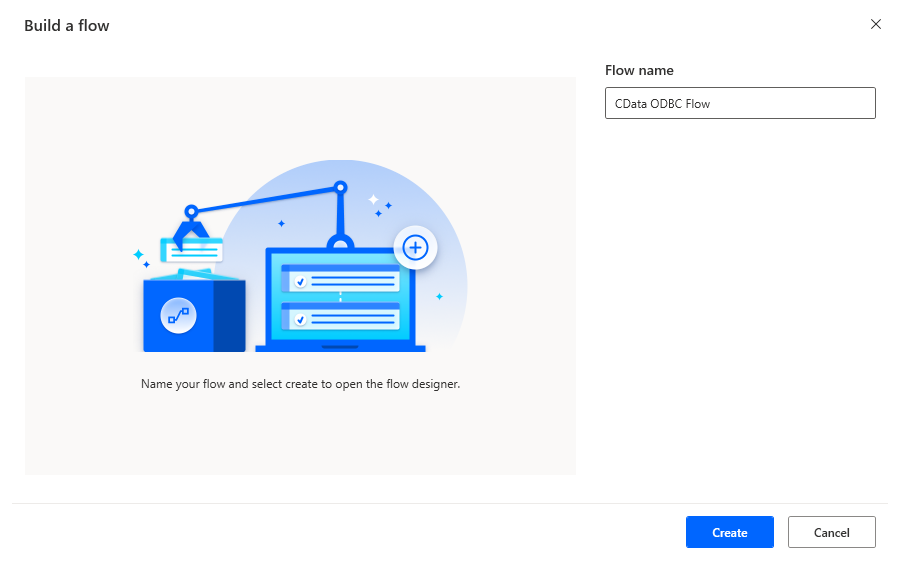
In the flow editor, you can add the actions to connect to Salesforce Data Cloud, query Salesforce Data Cloud using SQL, and write the query results to a CSV document.
Add an Open SQL Connection Action
Add an "Open SQL connection" action (Actions -> Database) and configure the properties.
After configuring the action, click Save.
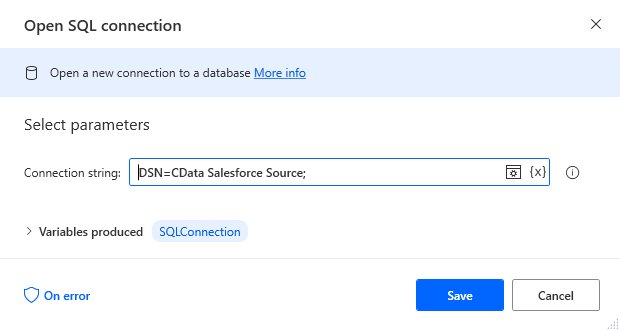
Add an Execute SQL Statement Action
Add an "Execute SQL statement" action (Actions -> Database) and configure the properties.
After configuring the action, click Save.
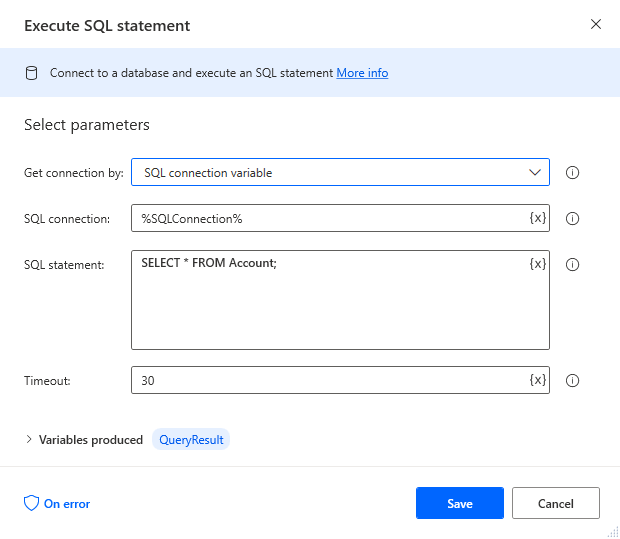
Add a Write to CSV File Action
Add a "Write to CSV file" action (Actions -> File) and configure the properties.
After configuring the action, click Save.
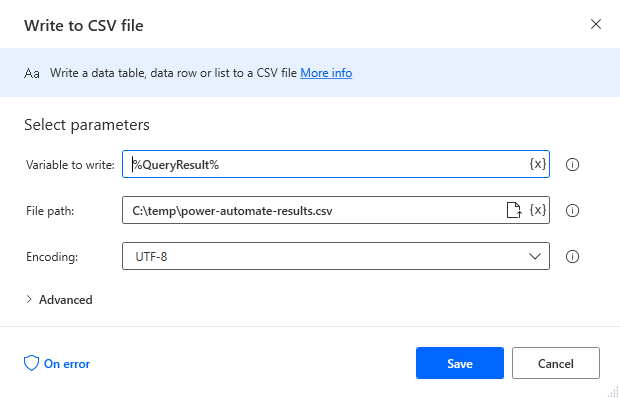
Add a Close SQL Connection Action
Add a "Close SQL connection" action (Actions -> Database) and configure the properties.
After configuring the action, click Save.
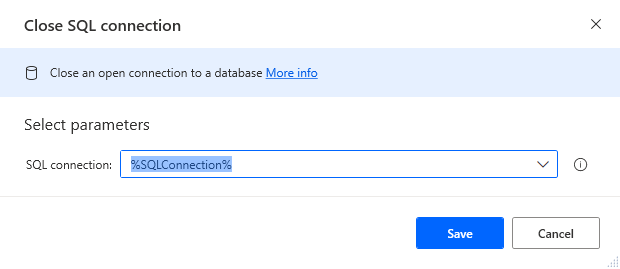
Save & Run the Flow
Once you have configured all the actions for the flow, click the disk icon to save the flow. Click the play icon to run the flow.
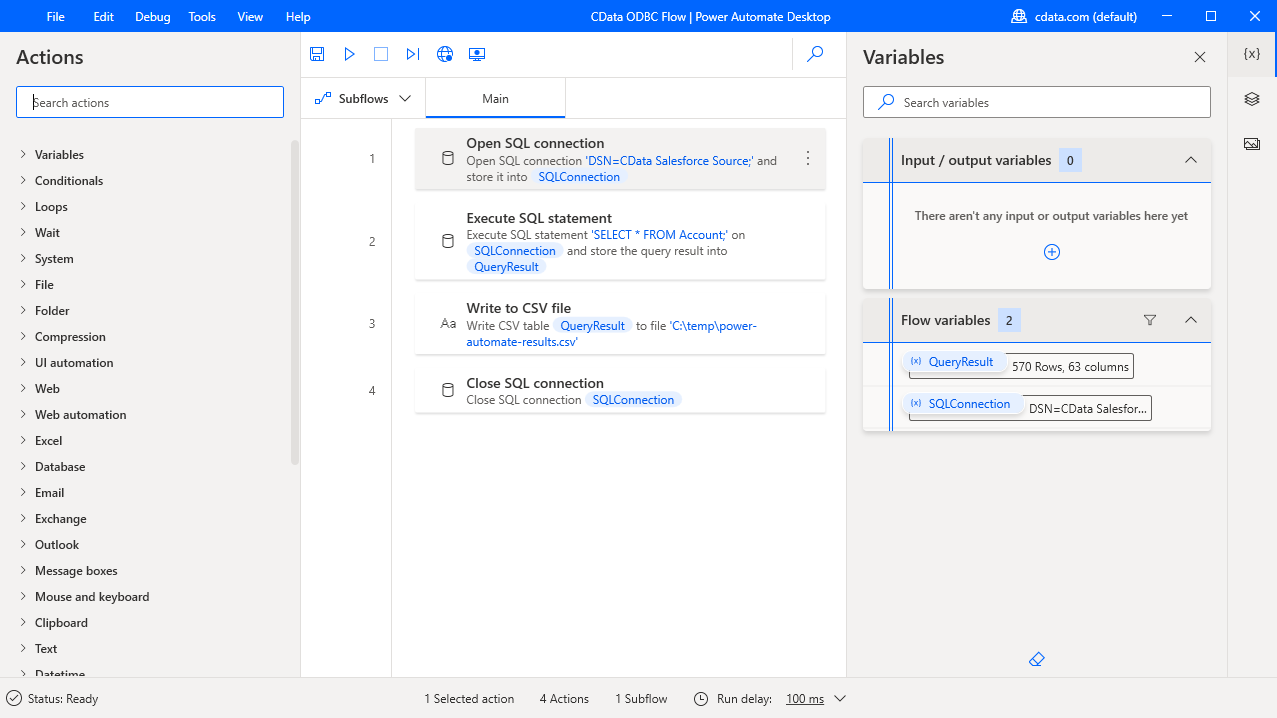
Now you have a workflow to move Salesforce Data Cloud data into a CSV file.
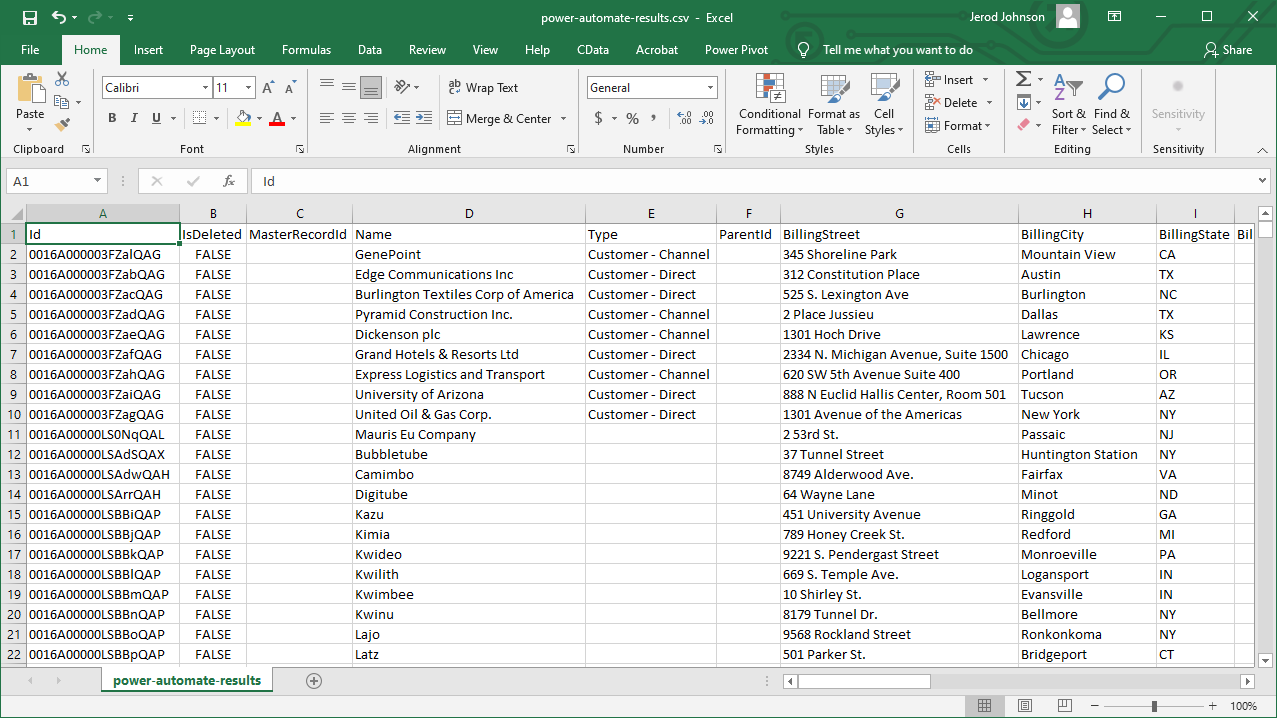
With the CData ODBC Driver for Salesforce Data Cloud, you get live connectivity to Salesforce Data Cloud data within your Microsoft Power Automate workflows.
Related Power Automate Articles
This article walks through using the CData ODBC Driver for Salesforce Data Cloud with Power Automate Desktop. Check out our other articles for more ways to work with Power Automate (Desktop & Online):

